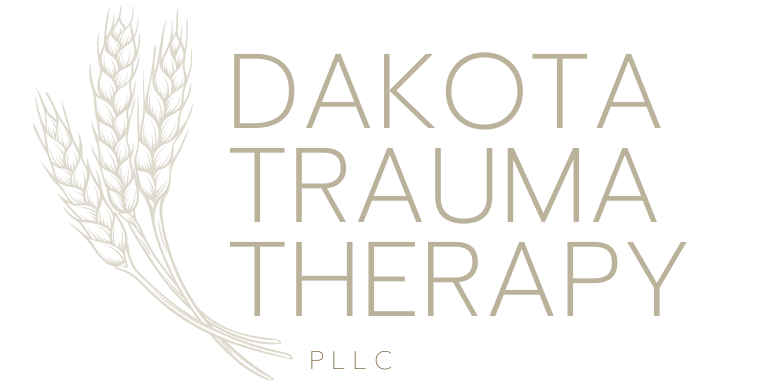EMDR certification is a critical step on the path to becoming an EMDR therapist.
EMDR therapy is internationally considered the choice of psychotherapy for patients experiencing PTSD and other related stress disorders.
Since the time it was devised by Dr. Francine, the application of EMDR is only escalating because of its tremendous efficacy in reducing stress related to a traumatic event.
As easy as it may seem, administering EMDR therapy can be quite challenging, especially for untrained professionals, as the sole purpose of this therapy is to treat emotionally vulnerable populations.
The emotionally vulnerable populations include PTSD patients, narcissistic abuse survivors, rape victims, patients of depression and anxiety, war survivors, or anyone who is struggling with negative self-belief.
The eight phases and three-tier EMDR protocol are designed exclusively to meet the counseling standards in order to achieve the maximum benefit from EMDR therapy with minimum risks.
These eight phases comprise of:
- History
- Preparation
- Assessment
- Desensitization
- Installation
- Body Scan
- Closure
- Re-evaluation. [1]
In each phase, distinctive therapy is performed to delicately replace the negative belief with a positive one, creating a safety net that protects the patient from experiencing re-traumatization.
The international EMDR community, along with EMDRIA (Eye movement desensitization and reprocessing international association) is working for over two decades to develop standard protocols needed to perform EMDR therapy. [2]
EMDRIA is a non-profit association with a vision to promote premium standard therapy protocol for the good of the community as well as health care providers.
In order to maintain the standards of excellence, EMDRIA encourages aspiring EMDR therapists to get the EMDRIA certification before initiating their EMDR therapy practice. [3]
Let’s dissect in detail what EMDR certification is all about and what benefits it brings?
Why do you have to be certified to do EMDR?
EMDR, as described above, is a distinct kind of psychotherapy that only benefits if administered in a specialized way. It is not necessary to consult a specialized therapist to administer EMDR, but it is not recommended to do so.
Considering the risks associated with self-administration of EMDR, it is only advised for small-scale traumas when access to trained professionals is challenging.
However, the more significant population seeks EMDR therapy for BIG-T traumas, including war experience, sexual assault, death of a loved one, and other experiences where life is at stake. In scenarios like this, consulting a trained professional is crucial.
EMDR, as the name suggests, has more to it than merely eye movements.
The whole procedure of desensitization and reprocessing requires a skilled professional to achieve optimal results. An eight phase long therapy where each phase focuses on a specific aspect of the treatment is definitely not something to be done by oneself.
The central core of EMDR therapy is to establish a relationship of trust and compassion between patient and therapist, allowing the patient to open up naturally. The EMDR protocol and phases are specifically designed to facilitate trust-building and empathy.

On the contrary, self-administration of EMDR may result in worse complications, including re-traumatization, which is often more intense. This happens when the safety net is not there, which is established by the qualified therapist only.
It is therefore essential for an aspiring EMDR practitioner to obtain his EMDR certification before stepping in as an EMDR therapist for the welfare of the patient.
What are the benefits of EMDR certification?
Becoming a certified EMDR specialist benefits you in many ways.
Countless therapists are roaming about without certification from EMDRIA, who, when requested to show their qualification have nothing to prove their expertise. Since the requirements to earn an EMDR certificate include extensive training and experience, a certified therapist is more confident about the quality of therapy he offers.
A certified professional is always preferred over a non-certified one. Those seeking excellent quality EMDR therapy will choose an expert from this field instead of experimenting with some untrained service provider.
Apart from practical benefits, EMDR certification also brings about professional advantages. The likelihood of jobs being offered to you will increase, and other associated professional privileges await you too. [4]
Requirements for EMDR certification
Now that you know what fruits EMDR certification holds for you, it’s time to learn some pre-requisites to obtain your EMDR certificate. According to EMDR international association, the requirements for EMDR certification are stated below.
- A photocopy of your license to practice as an individual mental health practitioner.
- A certificate of completing an EMDRA training program, approved by EMDR international association.
- A certificate of completing over 50 EMDR therapy sessions with a minimum of 25 patients
- A certificate of completing over 20 hours of EMDR consultation
- A letter of recommendation from one of the EMDRIA consultants.
- Two letters of recommendation from peers
- Twelve hours in continuing education in EMDR.
How do I get certified in EMDR?
In order to obtain your EMDR certification, you must fulfill the following criteria provided by EMDR International Association (EMDRIA)
License
One needs to have a license for practicing mental health therapy. You need to submit a photocopy of the practicing license to get your certificate. The license must have the mention of the state or province you practice in.
Experience
It is mandatory that the requester has experience of at least two years in the field he has submitted the license of. Also, having worked with a minimum of 25 patients and performing over 50 EMDR sessions is a must to obtain your EMDR certification. A written statement of the criteria mentioned above has to be notarized by a notary (legal practitioner who attests) and submitted along with other documents.
Training
The most critical requirement for EMDR certification is to complete an EMDRIA training program. At least 40 hours of training is required to complete the training program successfully.
Material for instructions, including an overview, patient history, EMDR protocol, and EMDR phases, comprises 20 hours. Subsequently, 20 hours of hands-on practice with an expert consultant is provided for the trainees to make the best out of their training.
Obtain a certificate of completion from an EMDRIA approved training program and attach it to other documents while requesting your EMDRA certification.

Consultation
Another vital requirement to earn an EMDR certification is to obtain a minimum of 20 hours of consultation from an EMDR therapist, approved and accepted by EMDRIA. These consultations can either be conducted individually or in groups.
It is essential that 10 hours of an individual consultation be attained, either one on one or through telephonic or video calls.
Other 10 hours of consultation can be taken in groups. One group should not contain more than 8 participants to ensure maximum attention to each one of the attendees.
After completing 20 hours of consultation successfully, your EMDRIA approved consultant will provide written verification of how many hours you have completed and out of which how many consultations were individual and how many were in groups.
If you have consulted multiple EMDRIA consultants to complete your consultation hours, a letter of recommendation has to be obtained from each one of them.
Letters of Recommendation
Obtain a letter(s) of recommendation from the consultant(s) you have taken your consultation from. It can be more than one EMDRIA approved consultant, who in his letter verifies your utilization of EMDR therapy with patients. A statement of evaluation by the EMDRIA approved consultant is included in the letter of recommendation to help you become a certified EMDR specialist.
Other than a letter of recommendation from your consultant, you need two more letters of recommendation to verify your practice ethics and how you deal with your clients. It basically reflects your working principles and character as a professional practitioner.
These letters can be requested from your colleagues and peers who closely know your way of working. However, you must not get a letter of recommendation from anyone in a supervisory role to you. The letter must be from someone equal to your level as a professional, and only that will count as something coming from a peer’s perspective. [5]
EMDRIA credits- 12 hour
Another criterion that needs to be fulfilled in order to earn your EMDR certification is obtaining a certificate of completing 12 hours of continuing education (CE) in EMDR. It is different than EMDR training, where EMDRIA credits are not awarded to you.
Only those programs that are approved for EMDRIA credits and are done after completing the extensive training are counted.
The EMDRIA certificate of CE in EMDR must mention the approval number of the EMDRIA program along with the credit numbers approved by EMDRIA.
Must agree upon EMDRIA Policies
Last but not least, once all of the above-mentioned requirements are fulfilled, you are advised to go through EMDRIA’s policies once again, read them thoroughly, and agree upon the EMDRIA code of conduct. [6]
The main postulates to keep in mind before applying for your EMDR certificate are listed below.
- You must maintain a standard of professional Excellency in your relative profession.
- You must not misuse the therapy techniques to harm any individual or group.
- Therapy must not be implied in any sexual orientation change efforts (SOCE) – in certain parts of the world, homosexuality is often confused with mental illness, and psychotherapeutic efforts are made to change it. However, extensive research in this regard supports the fact that homosexuality is a normal sexual orientation and has nothing to be treated. [7]
Moreover, data suggest that SOCE may cause potential harm, including depression, less attainment in studies, and related issues in children and teens. [8]
EMDR certificate renewal
Once your certificate is approved, you can conveniently work as a trained professional for up to two years without needing a renewal. You need to stay in touch with continuing education credits in order to maintain your credentials for two years. Three months before your certificate expires, you will get an email from EMDRIA reminding you about submitting the credits you achieved in this two-year period.
A renewal fee is different for members and non-members. You need to pay 300$ U.S Dollars if you are not an EMDRIA member and 100$ U.S Dollars if you are a member.
In case your EMDRIA credentials are expired for one year, its status becomes inactive. Renewing it within one year will cost you no extra charges. However, if it is expired for more than one year and less than five years, the renewal will require submission of a reinstatement form along with a reinstatement fee ( 175$ U.S Dollar for EMDRIA members, and 375$ U.S Dollar for EMDRIA non-members)
If credential expiration exceeds five years, you will have to reapply following the same procedure you performed while requesting the certificate for the first time. [9]
Where to get credits from?
You can attend pre-recorded EMDRIA on-demand workshops, EMDRIA’s live events on their EMDR education calendar, or opt for other distance learning options to earn credits.
What you need to consider before opting for any of the above-mentioned options is that the said event or workshop has the number of EMDRA credits and EMDRIA program approval number stated on their certificates.
How much does EMDR certification cost?
The cost of an EMDR certificate varies, depending on your EMDRIA membership status. The cost of certification is separate from the membership fee.
For full members, EMDRIA costs 150$ U.S Dollars which is non-refundable in case of change of mind. Whereas, non-members have to pay extra 200$ U.S Dollars, which makes a total of 350$ U.S Dollars, to obtain their EMDR certificate. [10]
Can EMDR therapy training be taken online?
Virtual training was never needed this direly as today. Amid the COVID-19 crises, it has become nearly impossible to participate in physical training programs. Taking this into consideration, EMDRIA allows the trainees and instructors to participate in and conduct virtual EMDR training.
However, the total duration of EMDR training varies depending upon their medium of conduction.
For physical training, EMDRIA needs you to complete 24 months of extensive training, fulfilling all criteria discussed earlier.
For virtual training, you need to complete 12 hours of training as per the instructions of EMDRIA.

What is a general eligibility criterion to enroll in EMDR training?
The eligibility criteria to obtain EMDR training is explained below; however, in order to achieve an EMDR certificate, you need to be a LICENSED MENTAL HEALTH PROFESSIONAL.
Masters or doctoral degree
It is preferable if you have a master’s or doctoral level educational background. Though it is not mandatory but in case you have that, chances are you can pull off the training pretty well, as compared to those with less academic education.
Holding a master’s or doctoral degree, chemical dependency professionals, art therapists, counselors can also get the EMDR training.
Social Workers
Social workers, counselors, family and relationship counselors, and everyone with a vision to help society evolve through stress and traumas can take this training and serve the nation with their comprehensive knowledge provided to them.
Healthcare Professionals
Individuals with a medical background, including nurses, physicians, psychologists, and psychotherapists, are more than just eligible to enroll themselves in EMDR training. [11]
Can I be called a certified EMDR therapist right after completing my EMDR training?
EMDRIA approved training programs, are although rigorous and extensive, you cannot call yourself an EMDR certified therapist only after the completion of your training.
These physical and virtual training are a part of your journey towards becoming a certified EMDR therapist. There are many crucial pre-requisites that need to be met to achieve your EMDR certification.
However, being a vigilant trainee may get you closer to your EMDR certification. This training helps you perform better as a therapist.
Phases where your consultant instructs you to perform in a certain way, make you realize where you went wrong and which areas you have to improve yourself in. Thereby, you get to learn more and more about EMDR standard practices from your instructors’ experience.
An exceptional EMDR training experience may not be enough to start practicing as a certified therapist, but it definitely paves your path to obtain your EMDR certification.

What are the core features of optimum EMDR training?
Many institutes offer EMDR training, but you need to be cautious of them being approved by EMDR International Association. Since the training that does not comply with EMDRIA criteria possesses no benefit if you intend to achieve certification, you must look for credible institutions for EMDR training.
Once you have found an institution approved by EMDR International Association, the likelihood of them offering the following services is optimal.
- Providing 40 hours long intense training to supplement your existing clinical expertise in EMDR therapy.
- Acquiring profound knowledge regarding EMDR therapy encompassing deep insights into the three-tier EMDR protocol and eight phases of EMDR helps you understand the core concepts better.
- Since EMDR therapy is an integrative technique [12], effective EMDR training teaches you how to conjugate EMDR with other psychotherapy forms, namely psychodynamic therapy, Cognitive behavioral therapy, client-centered therapy, and its likes. Once you have a better understanding of incorporating EMDR practices with other psychotherapies, you can gloss up your existing clinical practice. [13]

